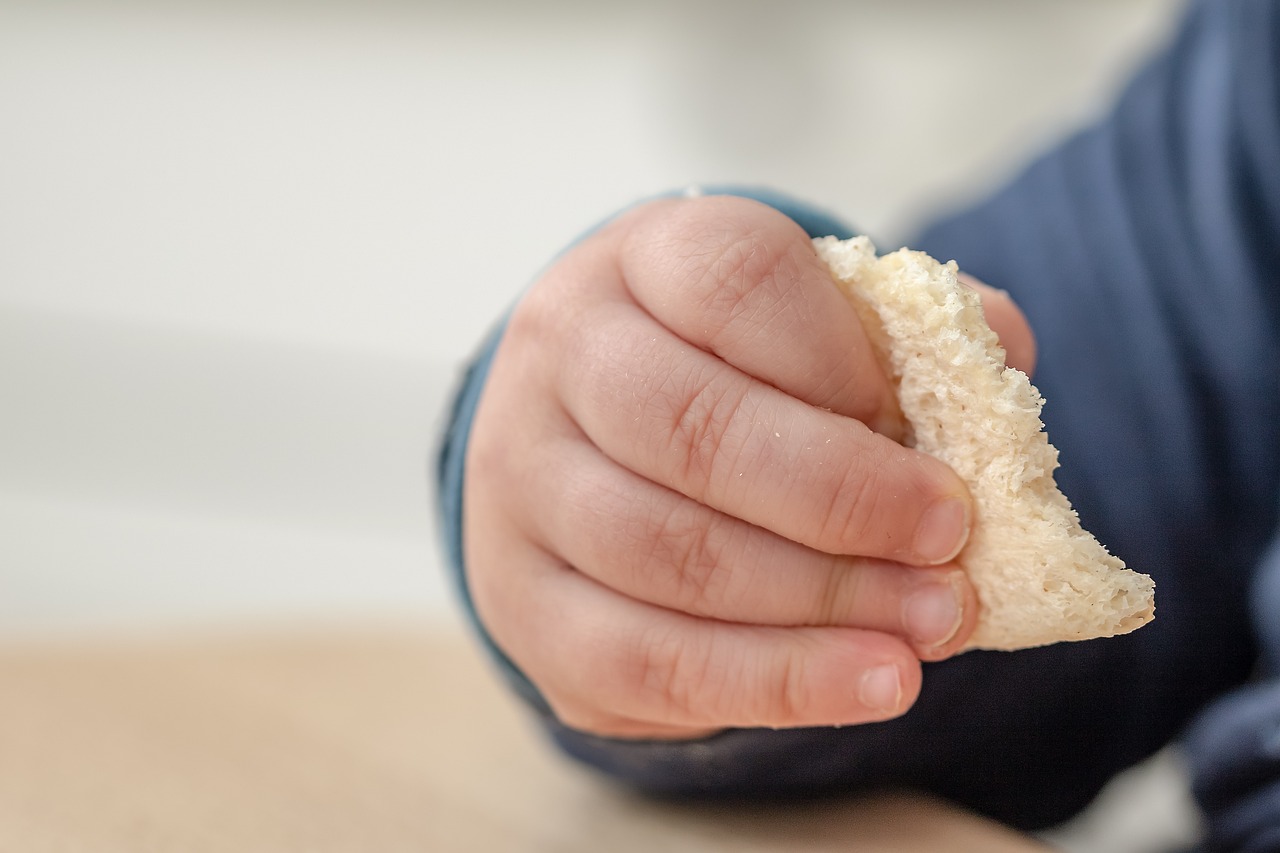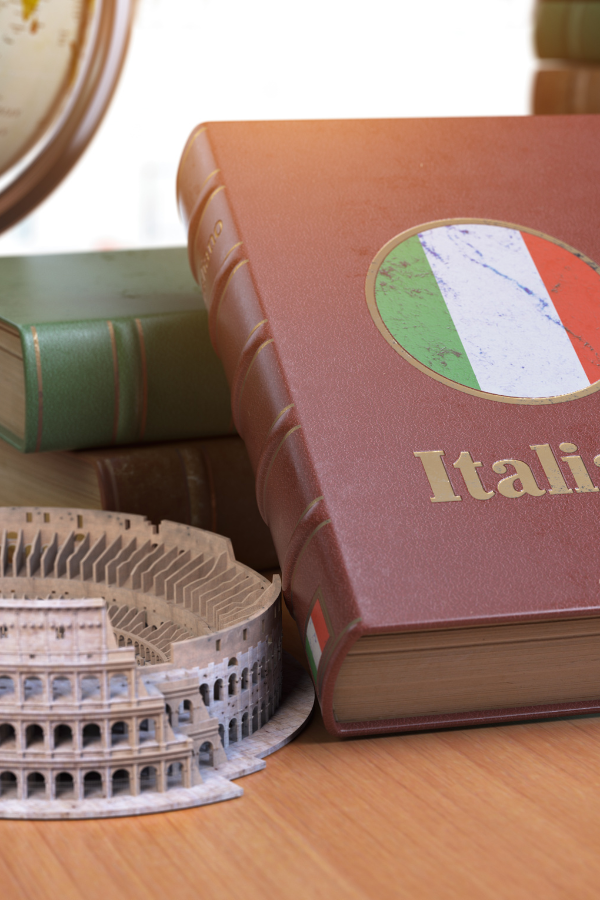Have you ever heard about the Italian expression fare la scarpetta and wondered what it means? Here I share with you its meaning and where fare la scarpetta could have come from.
You will learn everything about the expression fare la scarpetta and why Italians use it.
The Story of the Expression ”Fare la Scarpetta”
1. Meaning of ”fare la scarpetta”
Fare (la) scarpetta is an expression that Italians commonly use, a real ritual that is a must for many!
Fare (la) scarpetta indicates the gesture generally made at the end of a meal. The gesture consists of cleaning the sauce that is left on the plate or in the pot with a piece of bread stuck on a fork, or most commonly held between the fingers.

Despite being a popular gesture, even etiquette with its strict rules allows one to do it. The etiquette indicates though that you should do it only on informal occasions and using a fork, not hands.
2. Usage of ”fare la scarpetta”
The action of wiping a plate with a piece of bread is naturally well-known even beyond the Italian borders. However, the phrase fare la scarpetta is an entirely Italian way of saying. Other Romance languages and English use more or less extensive periphrases to describe the same action.

If you are wondering whether to use the expression with or without the article, there are indications that the version without the article (fare scarpetta) is well distributed throughout the Italian territory. While the version with the article (fare la scarpetta) seems to be less present overall, a discrete use of the phrase with the article can be observed.
There are other, mostly dialect expressions, in use in Italy to indicate the gesture of ”cleaning a plate with a piece of bread”. One such expression is pucciare/fare la puccetta/fare la puccia in the central-northern area of Italy, and you can also find it in some areas of Puglia and southeastern Sicily.
Italians also use the verb inzuppare, especially in the Tuscan area.
In Sicily and Calabria. we find a variaty of dialectal forms like abbagnari, ammugghiari, ammogliare.
In the province of Bologna people say fare toccino.
The expression bagnare il pane seems to have an entirely Sicilian origin.
3. Uncertain origin of ”fare la scarpetta”
Fare la scarpetta is one of the Italian idioms with the origin still not definitively clarified by historians. They agree only that the expression came from southern Italy and then spread throughout the country over the years.

The dictionaries do not provide etymological indications, but mark the phrase as common, familiar, and colloquial. Italians used this phrase in writing for the first time in the 20th century.
The date of the first attestation is in 1987. However, we already found the phrase in the ”Handbook of Modern Words’‘ (in Italian ”Prontuario di parole moderne”) published in 1952. It provides as a geographical indication Rome. Therefore, it leads to the conclusion that the phrase has been in use since at least the mid-20th century.
By looking at dialect uses, our conclusion changes though. There, we see indications that the expression fare la scarpetta had already been used before it was recorded in modern dictionaries.
The first attestation found in a literary piece called ”A Dialogue” (in Italian ”Un Dialogo”), in Roman dialect. This is consistent with the Roman origin indicated by the ”Handbook of Modern Words”, was published in 1871.
A few years later, in 1885, we find an attestation of this expression in the ”Essay of a study on the Abruzzo dialect” by Giovanni Pansa (in Italian ”Saggio di uno studio sul dialetto abruzzese”).
These references suggest a central-southern dialectal origin of the phrase fare la scarpetta.
4. Shoe hypothesis
The first hypothesis about the origin of the expression fare la scarpetta says that there is a similarity between the shape that the bread takes when it is passed on a plate and a shoe (scarpa in Italian), with a leg coming out of it.

In other words, it represents a comparison between dragging the bread on a plate to collect the leftovers and the shoe that scrapes on the ground and collects what it finds.
In the Abruzzo dialect, people use scarpetta also in the sense of walk (in Italian passeggiata). With that meaning, the word could recall the path of the piece of bread that collects the sauce on the plate, as a sort of walk.
5. Pasta hypothesis
Among the possible explanations for the origin of the expression fare la scarpetta there is also a reference to a type of pasta, concave in shape, which allows to collect the remaining sauce on a plate.

6. Poverty hypothesis
Others believe that the gesture of picking up food from a plate, considered inelegant, alludes to the action of a person who is very hungry because they are poor.

The hypothesis that fare la scarpetta is a reinterpretation of the southern dialect word scarsetta is perhaps the most widespread. In Neapolitan and Sicilian, the usage of this word refers to a condition of poverty (in Italian povertà).
In this context, the expression would imply that less wealthy people have to make it with the little they have to eat, being able only to look at the plate of others and hope to collect their leftovers.
7. Conclusion
Despite a probable central-southern origin, today the expression fare la scarpetta is quite widespread throughout the Italian territory. A well-known Italian pasta brand Barilla used the expression for its advertising campaign with the slogan ”Tutti vogliono fare “scarpetta.”

In short, there are a lot of popular forms, colorful and metaphorical expressions in Italy. Therefore, you can calmly choose whether to use the common expression fare (la) scarpetta or trace some dialectal variant of specific areas.
Whatever the origin of the expression might be, Italians essentially see it as a sign of sincere appreciation of the dish. It can also be an excellent remedy to avoid waste in the kitchen. The important thing is that if a dish is good, you clean up the entire plate!
This article was all about the Italian expression ”fare la scarpetta” and its possible origins.
Our recommendations

Italiano per modo di dire: Esercizi su espressioni, proverbi e frasi idiomatiche
This is a well-structured exercise book, fun, and full of activities and games!
It is suitable for both children and adults, divided into learning levels and themes. The book will teach you Italian idiomatic expressions, proverbs, and sayings. It presents a wide range of these linguistic elements that Italians commonly use every day. This book is suitable for both beginners (A1-A2) and intermediate learners (B1-B2), and it can be used both with a teacher or for self-study!

350 Espressioni idiomatiche italiane: Volume 1°
Discover the vibrant world of Italian idiomatic expressions! This intuitive and comprehensive manual is your key to mastering the colorful phrases that are integral to speaking Italian like a native. With a detailed thematic index, you’ll easily navigate through 350 expressions, each accompanied by explanations, practical examples, and fascinating insights into their origins. Whether you’re a language enthusiast or a learner striving for fluency, this book is essential for enhancing your understanding of Italian culture and communication. Elevate your language skills and enrich your conversations with this indispensable guide to Italian idioms!

350 ESPRESSIONI IDIOMATICHE ITALIANE Volume 2°
Building on the success of the first volume, this sequel introduces another 350 idiomatic expressions, each meticulously curated to expand your linguistic palette. Enhanced with practical examples, cultural insights, and historical anecdotes, this book not only teaches you how to use these phrases but also why they matter in Italian culture. Perfect for language learners at any level, this volume will refine your conversational skills, making you sound more like a local with every idiom you master. Unlock a new level of fluency and cultural understanding with the latest latest guide to the art of Italian expressions!

700 ESPRESSIONI IDIOMATICHE ITALIANE : spiegazioni, esempi, curiosità
Discover the colorful world of the Italian language with 700 idiomatic expressions! This engaging book offers an in-depth look at a variety of Italian idiomatic expressions, complete with explanations, practical examples, and fascinating trivia. Whether you’re a language learner or a culture enthusiast, dive into the nuances of Italian idioms to speak like a native and enrich your understanding of Italy’s vibrant linguistic heritage. Perfect for students, translators, and anyone passionate about mastering the art of Italian conversation!

Modi di Dire: Italian Idioms in Context. Con Spiegazioni, Esercizi ed Approfondimenti Culturali
This engaging book is your guide to mastering Italian idioms, offering clear explanations, practical exercises, and deep cultural insights. Whether you’re a student, a language enthusiast, or a traveler eager to speak like a local, this book will enrich your understanding and usage of Italian in everyday conversations. Dive into the heart of Italian culture and language, and transform your linguistic skills with every page!

Italian Idioms and Phrases: Italian Proverbs and Idiomatic Expressions
Unlock the secrets of the Italian language and culture with this treasure trove of linguistic gems, which will guide you through charming Italian sayings, proverbs, and idiomatic expressions! Perfect for learners at all levels, this book not only enhances your vocabulary but also offers a window into the soul of Italy. Immerse yourself in the richness of Italian idioms to speak like a native and understand the cultural nuances behind each phrase. Whether you’re preparing for a trip, studying the language, or simply in love with Italy, this book is your key to speaking with true Italian flair!

Dive into the vibrant heart of Italian culture with this meticulously curated collection of Italy’s most colorful and expressive idioms that offer more than just language learning. It’s a journey through the rich tapestry of Italian life and tradition! Each idiom comes with explanations, cultural insights, and usage examples, making it perfect for anyone keen to grasp the authentic Italian way of speaking. With this book, you’ll not only expand your Italian vocabulary, but also gain a deeper understanding of Italy’s cultural soul. Get ready to speak with the charm and wit of a true Italian!


